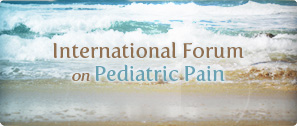Blog: Team offers options to help kids deal with pain
November 19th, 2010
Team offers options to help kids deal with pain
Published: 2010-11-19
By JOHN McPHEE Health Reporter
It is safe to say most people don’t look forward to getting a needle.
But some people aren’t simply nervous about getting a shot or having their blood drawn.
“I get a lot of referrals for kids who have developed a really significant anxiety,” said Halifax psychologist Christine Chambers. “And about one in 10 adults have a significant needle phobia, so they avoid seeking medical care. . . . There’s a lot of harmful consequences there.”
As a researcher with the IWK Health Centre’s pain clinic, Chambers specializes in finding ways to help children deal with pain.
“Just teaching kids to take a simple deep breath is sufficient to significantly reducing their pain,” she said in a recent interview.
A toy or a DVD also can make a big difference during procedures such as blood work or shots.
“One thing we recommend is blowing bubbles,” she said. “It’s a distraction and it makes children take deep breaths, which relaxes them.”
The pain clinic recently distributed baskets with toys and other distraction tools to doctors at the IWK in Halifax as part of National Pain Week activities.
Each person experiences pain in a different way, and children face particular challenges, Chambers said.
A child can’t describe his or her pain the way an adult can. For that reason, parents and guardians must advocate on their behalf in the health system.
The treatment of children’s pain has changed a lot in the past 20 years.
“Previously, there was a myth that young children didn’t feel pain as much as adults, so historically children have been significantly undermedicated,” Chambers said. “As health professionals, we really need to make sure children’s pain is managed in all ways.”
While distractions and other techniques can help kids with temporary pain, such as needles, chronic pain in children and adults is another story.
“Typically, there’s a reason you feel pain, you address it and it goes away,” she said. “For some people, . . . their brain is still getting signals, even though there’s no apparent origin for it or even that the pain should be persisting.”
That doesn’t mean the pain is “all in their head,” she is quick to point out.
“Increasingly, how we view it, it actually seems to be a problem with the pain-signalling mechanism. For some reason, the pain system is sending the message that there is pain, even though there may not be an acute injury or explanation.”
Chronic pain in children usually takes the form of headaches or stomach aches. The IWK pedatric pain clinic, recognized as one of the top such centres in the world, takes a multidisciplinary approach to treating chronic pain in children.
Besides psychologists, the team includes nurses, anesthesiologists and physiotherapists.
“These pain problems are complicated and they need to be dealt with in a co-ordinated way,” Chambers said.
(jmcphee@herald.ca)
© 2010 The Halifax Herald Limited









